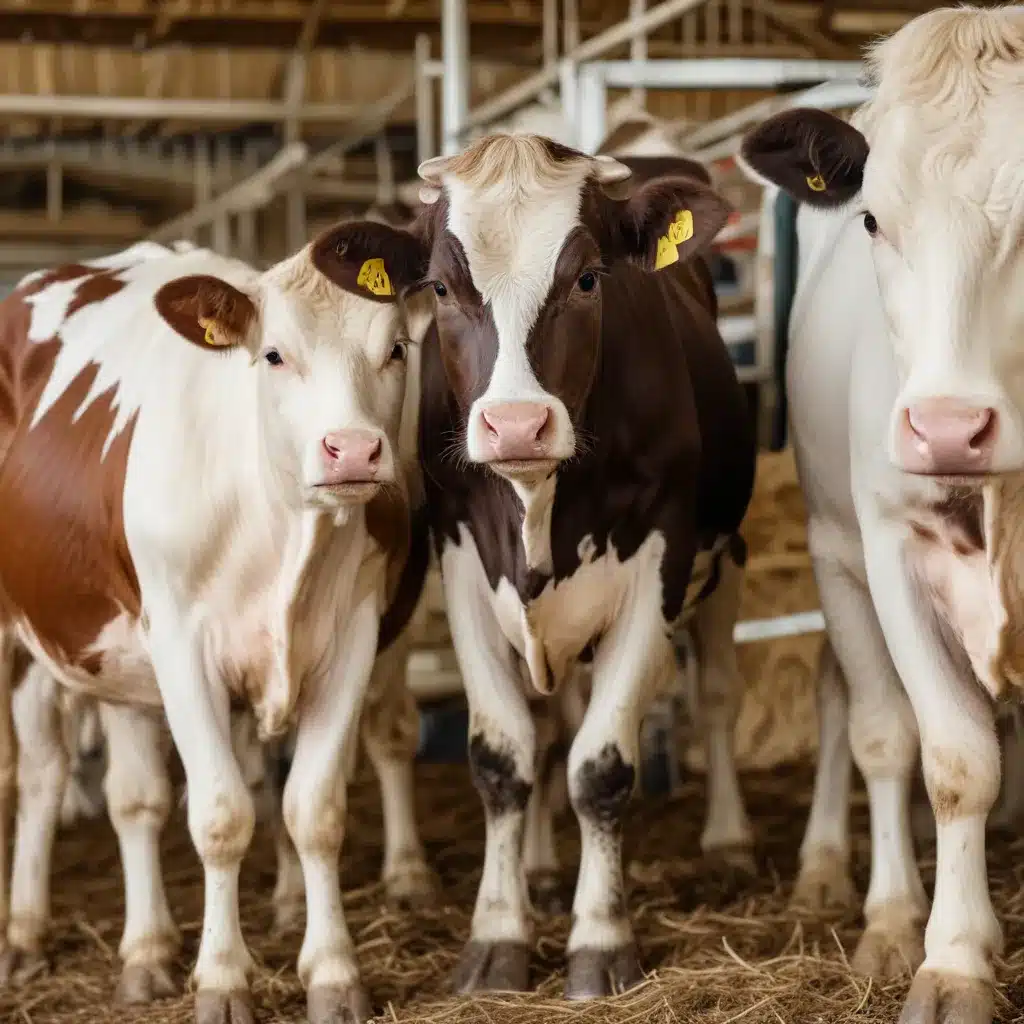
Dairy cows have long been the cornerstone of the family farm, providing a steady supply of wholesome, nutritious milk for home use and beyond. If you’re dreaming of adding these gentle giants to your Crooked Pines Farm, you’re in good company – more and more homesteaders are rediscovering the joys and benefits of keeping their own dairy herd.
Dairy Cow Breeds
When it comes to selecting the right dairy cow for your farm, there are a few key factors to consider. The classic Holstein is known for its impressive milk production, but the butterfat content may not be as high as some other breeds. Many hobby farmers favor the Jersey or Guernsey for their rich, creamy milk. The smaller Dexter is also making a comeback as a great dual-purpose option.
Whatever breed you choose, look for healthy, well-conformed animals from a reputable breeder. Registered purebreds will come at a premium, but unregistered crossbreeds can be a more budget-friendly route, especially if you’re just starting out. And remember, the breed itself isn’t as important as how you care for your cows and what you feed them.
Dairy Cow Housing
Before your first dairy cow arrives, you’ll need to have proper fencing and facilities in place. Barbed wire is a classic choice for larger acreages, but be sure to include at least 3-4 strands for effective containment. Electric fencing is also popular, providing an economical option for smaller paddocks. And the timeless beauty of a weathered wood fence can’t be beat – just be aware that maintenance may be more intensive over time.
In addition to secure perimeter fencing, you’ll want a safe handling area with a headlock or chute to restrain your cows for routine care and veterinary procedures. A small barn or three-sided shelter will give your herd protection from the elements. And don’t forget a reliable, conveniently-located water source – an old cast-iron bathtub can make a surprisingly effective (and charming) watering trough.
Dairy Cow Nutrition
Providing your dairy cows with a healthy, balanced diet is crucial for milk production and overall wellbeing. During the grazing season, a diverse pasture with a variety of nutrient-rich grasses should meet most of their dietary needs. But in the winter months, you’ll likely need to supplement with high-quality hay, ideally a grass-alfalfa mix.
For herds larger than 2-3 cows, haylage (partially fermented hay) can be a more cost-effective and convenient option than square bales. Just be sure to feed it in a way that minimizes waste, like using a large round feeder. And while some farms opt to feed concentrates or grains, I prefer to keep my cows on a forage-based diet to preserve the exceptional nutritional profile of their milk.
Dairy Herd Management
Maintaining a healthy, productive dairy herd takes a fair bit of hands-on care and vigilance. Regular health monitoring is a must – be on the lookout for signs of illness or injury, and work closely with your veterinarian to establish a proactive preventative care regimen.
Breeding and reproduction are also critical components of dairy farming. While allowing your cows to nurse their calves can be a rewarding experience, you may need to separate them for part of the day to ensure you have enough milk for your household. And when it comes time to breed your heifers, you can either use a bull or opt for artificial insemination – both methods have their pros and cons.
Dairy Cow Welfare
Beyond the basics of housing and nutrition, it’s important to consider the overall welfare and enrichment of your dairy cows. Providing environmental stimuli, like scratching posts or a varied grazing area, can help keep them content and less prone to stress-related behaviors. And taking the time to gentle-train your animals, rewarding calm interactions, will make routine care much easier (and safer) for both you and your herd.
Of course, you’ll also want to establish a good working relationship with a large animal veterinarian who can address any health concerns that crop up. Proper hoof care, deworming, and vaccination protocols are all essential for keeping your cows in tip-top shape.
Economic Aspects of Dairy Farming
While the prospect of fresh, homegrown dairy products is certainly enticing, it’s important to weigh the financial realities of maintaining a small dairy herd. Beyond the initial investment in animals and infrastructure, you’ll need to factor in ongoing feed, bedding, and veterinary costs. And if you plan to sell raw milk or dairy products, be sure to research your local regulations, as laws can vary widely by region.
That said, with careful planning and management, a small dairy operation can absolutely be a viable endeavor, providing your family with wholesome food while potentially generating additional income. Many hobby farmers find great satisfaction in direct-marketing their dairy products at farmers markets or through community-supported agriculture (CSA) programs. And don’t forget the tax benefits that come with having an agricultural exemption on your land!
So if the idea of waking up to the gentle lowing of your own dairy cows appeals to you, take the plunge – with the right preparation and dedication, you can absolutely build a thriving herd at Crooked Pines Farm. Just be sure to connect with experienced dairy farmers in your area and utilize the wealth of resources available, like the Miniature Hereford Breeders Association. Happy herding!


